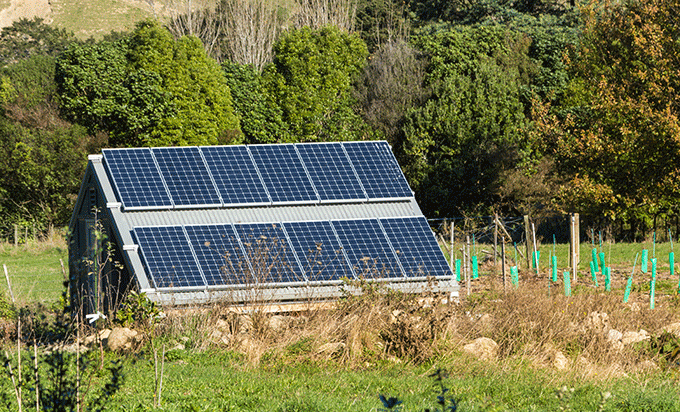Latest Posts
8 Steps To A More Environmentally Friendly Shed

That hole in the ozone layer isn’t going to fix itself, more's the pity. Everything’s going greener, and everyone’s doing their part, little by little. Even if you’re not a big fan on the trend, there’s plenty of benefit to going green nowadays - you can save on energy bills with solar power, you can use green materials for the same cost or cheaper as their non-green alternatives, and you’ll get a warm glowing feeling inside.
You’ll get one by not going green too, but this warm feeling isn’t being caused by global warming catching up. So let’s look at some ways you can make your shed more environmentally friendly.
1. Install Solar Panelling
The classic shed design is the corrugated tin roof. Anyone who’s ever owned one of these will attest that even in the slightest heat, they’ll be boiling to the touch.
To that end, a shed is a great big raised structure that’s great at accumulating heat. Perfect place to slap some solar paneling. Solar panels aren’t particularly expensive, there are a lot of different types and they’ll be as green as you can get, and they’re an investment - over time, they’ll pay for themselves in energy saving costs, as you can skim off your energy bill through the power they produce.
Investing a solar-powered shed also means that you’ll have an easy access point to electricity for the shed without feeding in from the house. The solar energy accumulated can power the shed internally, from its lighting, power sockets, and even heating and cooling.
2. Lose the concrete base
Concrete isn’t the way to go if you’re looking to build a greener shed. Polypropylene tiling or vinyl bases will do the same job without making a great big permanent eyesore on the ground. They’re a much, much more sustainable model than concrete, which lasts for a very long time and will generally outlast the lifetime of your shed (and probably you).
Plus, if you decide you’d rather have the shed somewhere else, or if you’re rather over the whole having-a-shed thing entirely and want to scrap it, you can simply heave up and re-tile it somewhere else.
3. Insulate
Insulating your shed saves on energy costs by conserving more energy. Good insulation will also regular heat and cold better, which means that you’ll be able to work on hot summer days without blasting fans or installing a cooling system. It’s a practical and economic benefit, and it’s environmentally friendly. What’s not to love?
4. Lock up manually
Titan Litle offer a range of electronic security devices and access doors, but if you’re trying to go green, you might be more interested in a conventional locking system. Getting a decent padlocking system for your shed won’t provide quite as much security as an electronic one, but it should be more than enough for 90% of homes, and with an added benefit of using much less power.
5. Use energy efficient bulbs
Bit of an easy one here, but if you’re going to be spending all day in the shed, consider swapping out that old light fitting for a more efficient bulb. Energy-efficient bulbs can use up to 80% less energy, which can very much add up over the course of a couple of weekends spent tinkering.
6. Catch some rain
You can cut down on a little water cost by installing a water catchment on your shed roof runoff. The angled walls of a shed work pretty well for catchment, so you’re not wasting space (except for the physical tank).
7. Like birdsong?
A shed wall is a great place to install a bird feeder. If you’re in a part of Australia with great wildlife (or don’t mind bringing a few magpies in with the Galahs), setting up a bird box will get you some morning birdsong, and maybe even a feathered friend to help you at work.
Getting some wildlife into your garden helps plants grow, help the ecosystem thrive, and has the added benefit of being perfect for kids to learn about nature.
If you’re feeling adventurous, and you didn’t go for the solar panel option (note: we strongly advise not combining this with the solar panels, for obvious reasons), you can even set up a ‘living roof’. Put some feeders, some plants, or even a small herb garden up on the roof of the shed (assuming you have access) - it’ll provide a nice thing to look at and help your garden simultaneously.
8. Mulch the base right
When mulching under the base in order to prevent weed growth, we recommend utilising a sustainable product. Many places recommend scallop shells, as they’re in abundance, environmentally friendly, and work just as well as wood chips when crushed up and sown around in a similar fashion.
